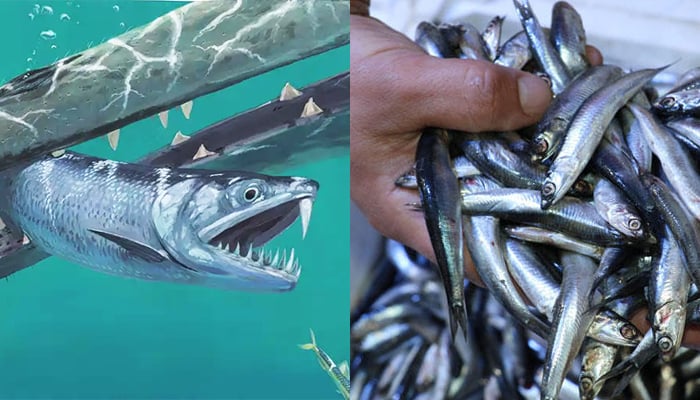Millions of years old sabre-toothed fish discovered in Pakistan named after 'churel'
An almost 50-million-year-old fossil of another type of fish of the same species was found in Belgium
June 01, 2020

KARACHI: An ancient fossil of the sabre-toothed anchovy fish unearthed in Pakistan has been named after churel, or witch in English, because of its long, pointy teeth.
An almost 50-million-year-old fossil of another type of fish of the same species was found in Belgium.
Experts led by Alessio Capobianco, a PhD student at the University of Michigan's Department of Earth and Environmental Sciences, said the fossil was 45 million years old, according to Capobianco's research paper in the Royal Society’s research journal.
The paper indicated that the fossil was discovered in "Rakhi Nala (locality RN-4) on the east side of the Sulaiman Range in the Dera Ghazi Khan" in Punjab.
"One meter in length, it lived in the shallow seas of Pakistan 45 million years ago," said Capobianco.
According to an analysis, the ancient anchovy had a row of fine teeth in its lower jaw and a single, long, and pointed one in the upper jaw. The fish's scientific name was attributed to a witch because of its sharp teeth that the then-dangerous predator used to hunt smaller fishes.
The name "Monosmilus chureloides" was a combination of Ancient Greek and Urdu, Capobianco said in his paper. It comes from monos (single) and smil'e (knife) in Ancient Greek and churel (witch) in Urdu — combined together to "single-knife churel".
The suffix 'oides' in the name indicated similarity, he added.
Churel in Urdu means a shape-shifting witch with large fangs in South Asian folklore.
In present day, however, the same species is tiny, has almost no teeth, and consumes microscopic objects floating in the sea. It forms the second-largest population among fishes of Pakistan.
According to WWF Pakistan Technical Adviser (Marine Fisheries) Moazzam Khan, it's an integral part of pizza around the world and is also used in various other types of fish-based meals.
"It eats insects by sifting through the water," Khan said.











